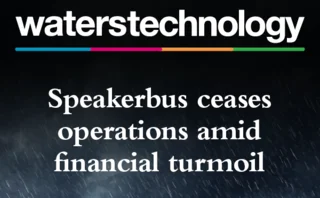May 2011: Don't Hurry, Be Happy

Thirteen years ago, I was a teacher and I’m happy to say that I still have fond memories of the decade or so I spent at all-boy independent boarding schools in South Africa. I often find myself contemplating conversations I had with the students, many of which centered on what it means to be happy.
I remember chatting with the seniors fairly late into the evenings while I was on duty—there was a certain inevitability about the manner in with the conversation meandered its way to the subject of happiness and contentedness, which yielded an astonishing number of debates. I’m sure the social scientists among our ranks will be able to disabuse me of my misapprehension between those two states of being—my response leaned toward perceiving them as one and the same thing. My argument, therefore, went something like this: “You will never be happy and content until you accept that what you have is enough and that do not want or need more.”
That’s a pretty simple line of reasoning, one that you may or may not agree with, but when the notion of relative deprivation—a state of mind responsible for more unhappiness in western cultures than any other—is added to the mix, the unavoidable consequence is universal unhappiness and discontent.
The point of this seemingly random walk down philosophy lane is its relevance to our industry. During conversations I had with Ciena’s Tom Mock and NYSE Euronext’s Andrew Bach, what occurred to me is the extent to which the industry fixates on speed, especially in the high-frequency trading space, at the expense of other trading-related variables. Firms seem seduced by the never-ending cycle of latency reduction, the natural end point of which is near-zero latency—basically, light speed. Much in the same way that I proposed that you’re never likely to be content until you accept that what you have is sufficient, financial organizations would do better to partner with a service provider offering industry-standard connection speeds, and instead focus their efforts on improving the quality of their internal trading infrastructure, the suitability of their algorithms, and their research and investment decisions. This is especially pertinent to buy-side organizations, many of which have legacy infrastructures that contribute significantly to latency even before orders are fired into the market.
And as for high-frequency shops using out-of-date or sub-par algorithms, routing orders to the market at the fastest possible speed will help them realize one thing: how far out of the money they are—they’ll just get to realize it that much faster.
Only users who have a paid subscription or are part of a corporate subscription are able to print or copy content.
To access these options, along with all other subscription benefits, please contact info@waterstechnology.com or view our subscription options here: https://subscriptions.waterstechnology.com/subscribe
You are currently unable to print this content. Please contact info@waterstechnology.com to find out more.
You are currently unable to copy this content. Please contact info@waterstechnology.com to find out more.
Copyright Infopro Digital Limited. All rights reserved.
As outlined in our terms and conditions, https://www.infopro-digital.com/terms-and-conditions/subscriptions/ (point 2.4), printing is limited to a single copy.
If you would like to purchase additional rights please email info@waterstechnology.com
Copyright Infopro Digital Limited. All rights reserved.
You may share this content using our article tools. As outlined in our terms and conditions, https://www.infopro-digital.com/terms-and-conditions/subscriptions/ (clause 2.4), an Authorised User may only make one copy of the materials for their own personal use. You must also comply with the restrictions in clause 2.5.
If you would like to purchase additional rights please email info@waterstechnology.com
More on Trading Tech
Examining how adaptive intelligence can create resilient trading ecosystems
Researchers from IBM and Wipro explore how multi-agent LLMs and multi-modal trading agents can be used to build trading ecosystems that perform better under stress.
S&P Global partners with IBM, Eventus launches Frank AI, Tradeweb expands algo execution abilities, and more
The Waters Cooler: Arcesium makes waves with Aquata Marketplace, NYSE Cloud flows into Blue Ocean Technologies, and more in this week’s news roundup.
Robinhood looks to ‘Chaos Monkey’ for op resilience playbook
As firms look to break down silos across business divisions to bolster operational resilience, the US broker is ditching emails, while utilizing chaos engineering and automating everything in sight.
Bank of America’s GenAI plan wants to avoid ‘sins of the past’
Waters Wrap: Anthony spoke with BofA’s head of platform and head of technology to discuss how the bank is exploring new forms of AI while reducing tech debt and growing interoperability.
TMX Group buys Verity, Deutsche Börse puts market data on-chain, and more
The Waters Cooler: The Texas Stock Exchange is SEC-approved, FalconX launches 24/7 access to OTC crypto options, and the CFTC needs a chair.
WatersTechnology latest edition
Check out our latest edition, plus more than 13 years of our best content.
24/7 trading roll-out risks pushback, industry veterans say
DRW’s Wilson warns of “mutiny” on non-stop rate options trading.
Ediphy challenges FCA, Sterling launches new OMS, and more
The UK bond tape is halted, LSEG and Databricks partner, Wells Fargo adopts TransFICC’s One API, and more in this week’s news roundup.








